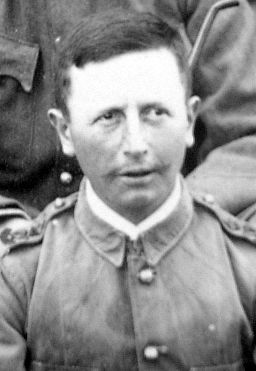View entry
Name: HAUSBURG, Campbell Bernhard

Nee: son of Friedrich Hausberg (originally from Prussia), relative of Mackinder's wife
Birth Date: 17.8.1873 Penshurst, Kent
Death Date: 20.3.1941 Hove, Sussex
Nationality: British
First Date: 1898
Profession: Mountaineer and photographer with Mackinder expedition to Mt Kenya
Area: Mt. Kenya - succeeded in reaching summit, Fort Hall
Married: In London 28.12.1899 Anne Harriet Goldfinch b. 9 Aug 1861 Hillingdon, d. 13 May 1949 Uckfield
Children: Marion Beatrice (Griffith) (Chelsea 25.10.1900)
Book Reference: Gillett, Cranworth, North, Land, Web
War Service: British Red Cross
General Information:
Land - 1908 - C.B. Hauseburg, T.R. Swift, E.D. Rutherford and J.E. Cowen - Grazing, 4000 acres, Thara River, 19-4-04, Registered 19-2-08
North - Member of East African Cotton Syndicate, resident at Mombasa 24-10-1904; Farming near Fort Hall in partnership with Ernest Rutherfoord and J. Randall Swift Nov 1904; Settler's Game Licence, Mombasa 3-12-1904; Mombasa Jan 1905
Web - Having witnessed the success of the sisal plantations in German East Africa, Mr. Campbell B. Hausberg, backed by Messrs. Swift and Rutherfoord, in November, 1907, conceived the idea of planting sisal (Agave sisalana) in the uplands on the rich lava-covered plateau in the Thika district. He ploughed, cross-ploughed, and cultivated this land with oxen, and planted bulbils obtained from German East Africa. At first these were spaced 7 ft. by 7 ft., but gradually wider until 8 ft. by 8 ft. (say 650 plants per acre) became the established practice.
The plants grew well and were ready for cutting in two and a half years. Several cuts, representing about 160 leaves in all, were taken during the following two to two and a half years, yielding during the life of the plant a total of three tons of dry fibre per acre. An automatic decorticator of Messrs. Krupp's make was installed by October, 1911, driven by a 70-!. h. p. suction-gas plant, turning out two tons of cleaned dried fibre each day of eight or nine hours. The fibre is carefully washed after decortication to remove the acrid juices, then dried on lines in the sun, after which it is graded into Prime and Good qualities, each long and short, and compressed to about 80 qubic feet to the ton in a Bijoli baling press. It is then carted to Thika, railed to Mombasa, and shipped to the consuming markets. The quality is as good as can be produced and is an improvement on that of Mexico, the original home of the sisal industry.
Cranworth - partner with Swift and Rutherfoord at Punda Milia
SE - C.B. Hansbury [sic] - July 1907
Ancestry Passenger list 1922 London-Mombasa
Ditto 1919 Liverpool-Natal
